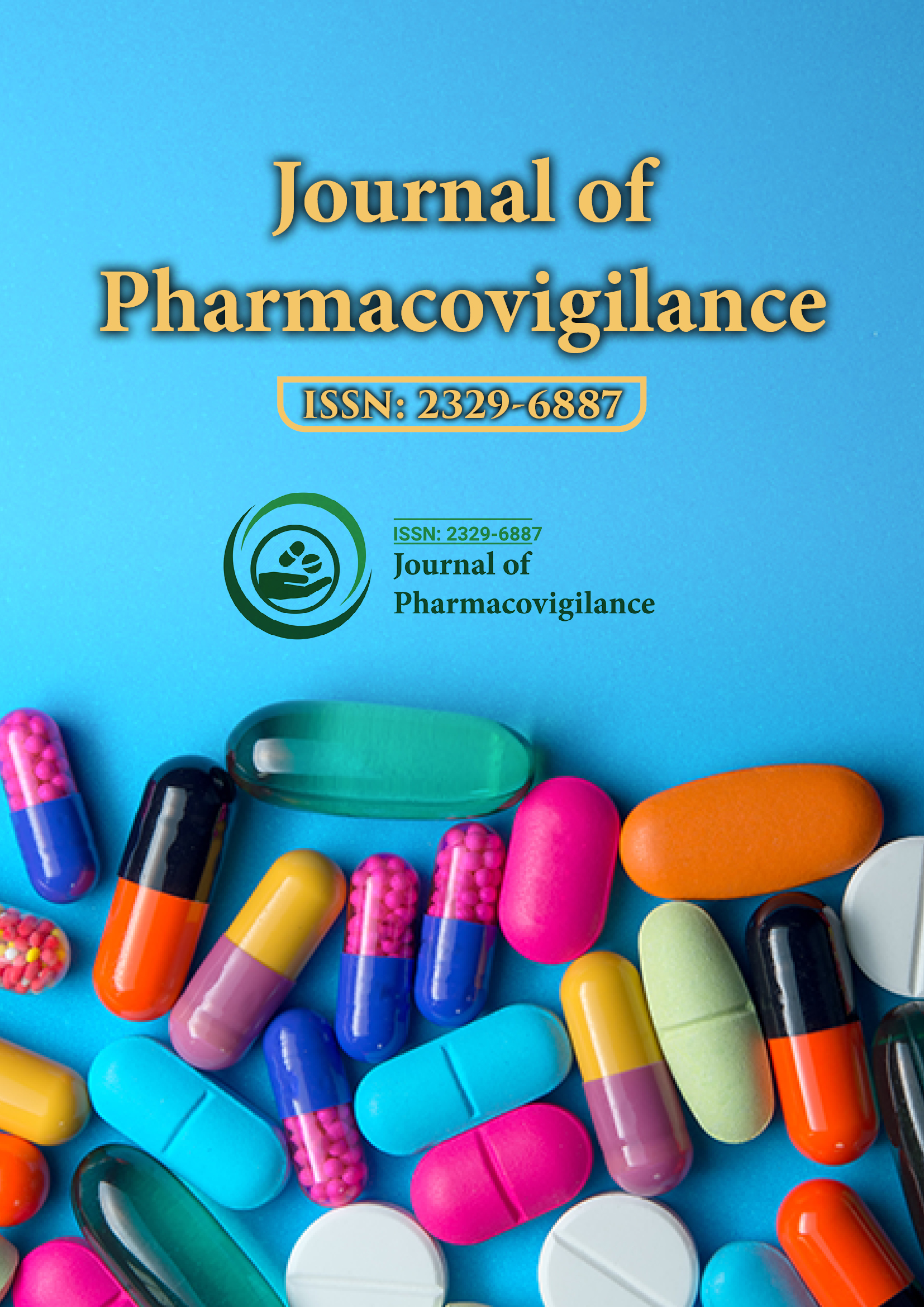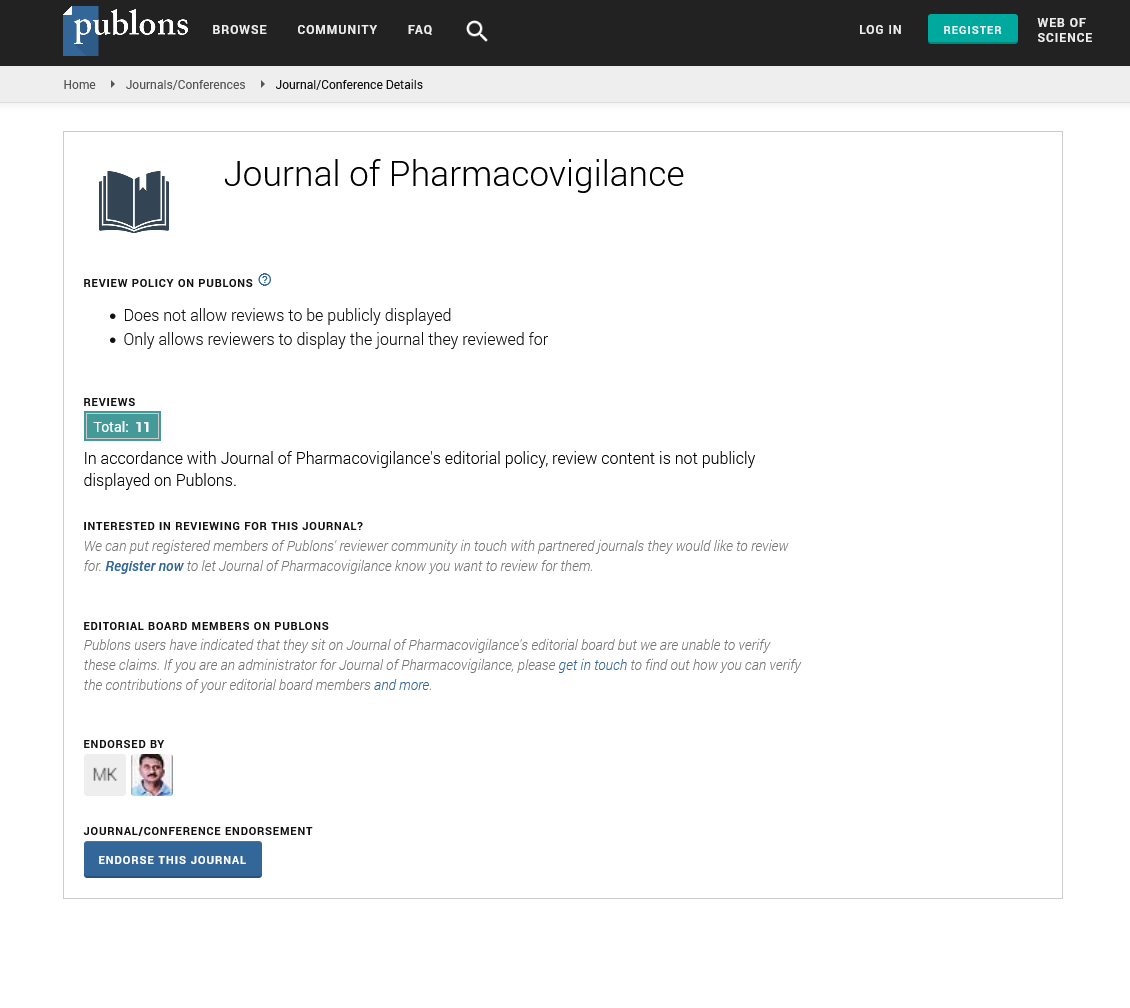Indexed In
- Open J Gate
- JournalTOCs
- The Global Impact Factor (GIF)
- RefSeek
- Hamdard University
- EBSCO A-Z
- OCLC- WorldCat
- Publons
- Euro Pub
- Google Scholar
Useful Links
Share This Page
Journal Flyer

Open Access Journals
- Agri and Aquaculture
- Biochemistry
- Bioinformatics & Systems Biology
- Business & Management
- Chemistry
- Clinical Sciences
- Engineering
- Food & Nutrition
- General Science
- Genetics & Molecular Biology
- Immunology & Microbiology
- Medical Sciences
- Neuroscience & Psychology
- Nursing & Health Care
- Pharmaceutical Sciences
Commentary - (2025) Volume 13, Issue 1
Integrating EHRs for Proactive Pharmacovigilance
Rhea Choudhury*Received: 03-Mar-2025, Manuscript No. JP-25-28634; Editor assigned: 05-Mar-2025, Pre QC No. JP-25-28634 (PQ); Reviewed: 19-Mar-2025, QC No. JP-25-28634; Revised: 26-Mar-2025, Manuscript No. JP-25-28634 (R); Published: 02-Apr-2025, DOI: 10.35248/2329-6887.25.13.502
Description
The integration of Electronic Health Records (EHRs) into pharmacovigilance represents a significant advancement in the transition from reactive to proactive drug safety surveillance. Traditionally, pharmacovigilance has relied heavily on spontaneous reporting systems and post-marketing surveillance studies, which, although valuable, often suffer from underreporting, delayed detection, and limited contextual clinical data. EHRs, by contrast, provide a rich, real-time source of longitudinal patient information that can be harnessed to monitor, identify, and predict Adverse Drug Reactions (ADRs) with greater accuracy and timeliness. The proactive use of EHRs in pharmacovigilance is helping to reshape the landscape of drug safety monitoring by facilitating early signal detection, individualized risk assessment, and continuous learning from routine clinical care.
EHRs contain comprehensive medical histories, including demographic information, diagnoses, prescriptions, lab results, imaging, and physician notes, which can be leveraged to generate more nuanced insights into drug-related outcomes. Unlike spontaneous reports, which often lack detailed clinical context, EHR data allows for the correlation of drug exposures with physiological changes, disease progression, and concurrent therapies. This granularity improves the attribution of causality in suspected ADRs and enables researchers to detect patterns that may be obscured in traditional pharmacovigilance systems. Moreover, the longitudinal nature of EHRs enables the assessment of long-term effects of drug use, including late-onset ADRs, cumulative toxicity, and interactions over extended treatment durations.
Integrating EHRs into pharmacovigilance systems also supports the development of real-time surveillance tools. By applying statistical models and machine learning algorithms to EHR data streams, healthcare institutions can implement automated detection systems that flag abnormal clinical events potentially linked to specific medications. These systems can operate continuously, allowing for near-instantaneous alerts to clinicians when a patient exhibits early signs of an adverse drug reaction. For instance, sudden changes in laboratory values such as elevated liver enzymes or abnormal ECG readings following the administration of a hepatotoxic or cardiotoxic drug can trigger warnings, prompting timely intervention and potentially preventing serious outcomes.
The scalability of EHR-driven pharmacovigilance has further enabled population-level drug safety analyses. By aggregating anonymized data across hospitals, regions, or even countries, researchers can identify rare adverse events and evaluate the safety of drugs in diverse patient populations, including groups often underrepresented in clinical trials such as the elderly, pregnant women, and individuals with multiple comorbidities. Such large-scale analyses are essential for capturing the full spectrum of drug risks and informing evidence-based updates to clinical guidelines, labeling, and regulatory decisions.
Despite the promising potential, integrating EHRs into pharmacovigilance comes with several challenges. Data heterogeneity remains a key concern, as variations in EHR platforms, data formats, coding systems, and clinical practices can complicate data extraction, harmonization, and analysis. Standardizing data using frameworks such as the Observational Medical Outcomes Partnership (OMOP) common data model is helping to overcome these barriers, enabling consistent and comparable analyses across different healthcare settings. Another challenge involves ensuring patient privacy and data security, particularly when EHRs are used in multicenter or international studies. Strict adherence to data protection regulations such as the GDPR and HIPAA is essential to maintaining public trust and ethical integrity.
Moreover, the implementation of EHR-based pharmacovigilance requires close collaboration between clinicians, informaticians, data scientists, and regulatory bodies. Clinicians must be trained to document data accurately and consistently, while informatics teams are tasked with building and maintaining the infrastructure for data integration and signal detection. Regulatory agencies must establish clear guidelines for the use of EHR data in pharmacovigilance, including criteria for signal validation, reporting thresholds, and post-detection action plans. As the field matures, the role of artificial intelligence and natural language processing in analyzing unstructured data such as physician notes and discharge summaries is also becoming increasingly important, enhancing the depth and breadth of safety surveillance.
Citation: Choudhury R (2025). Integrating EHRs for Proactive Pharmacovigilance. J Pharmacovigil. 13:502.
Copyright: © 2025 Choudhury R. This is an open access article distributed under the terms of the Creative Commons Attribution License, which permits unrestricted use, distribution, and reproduction in any medium, provided the original author and source are credited.

